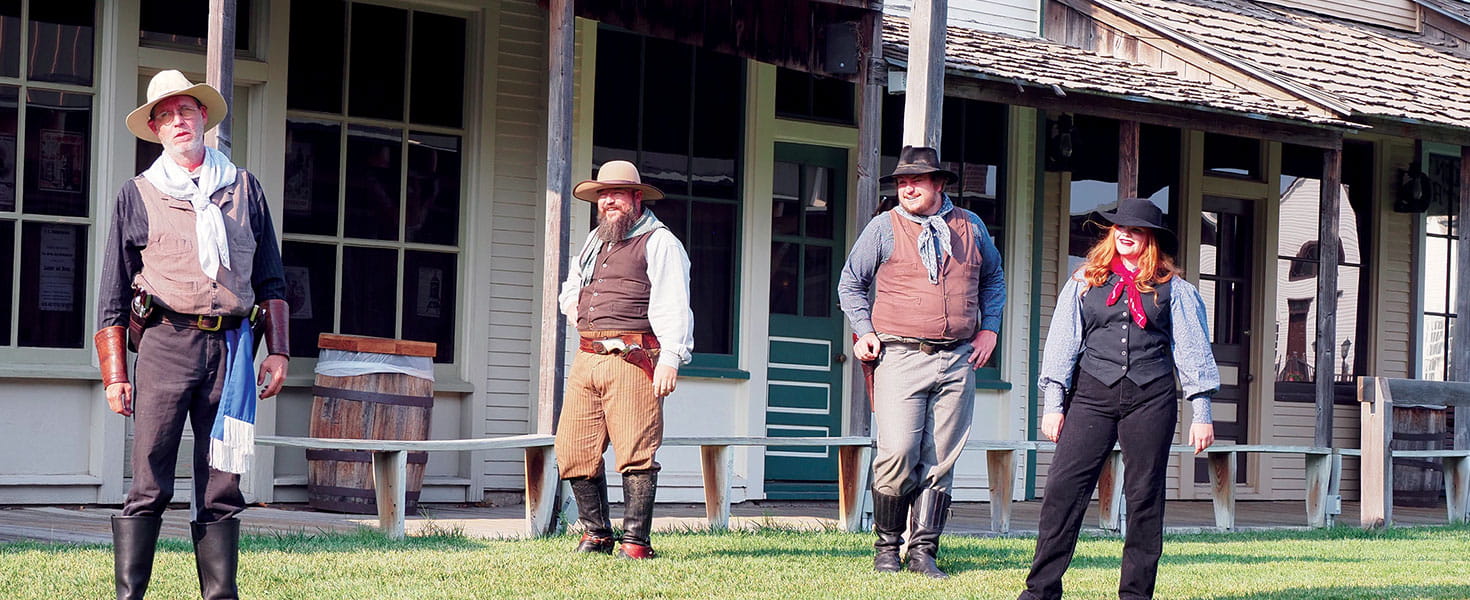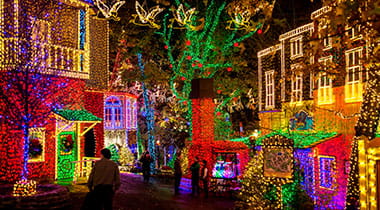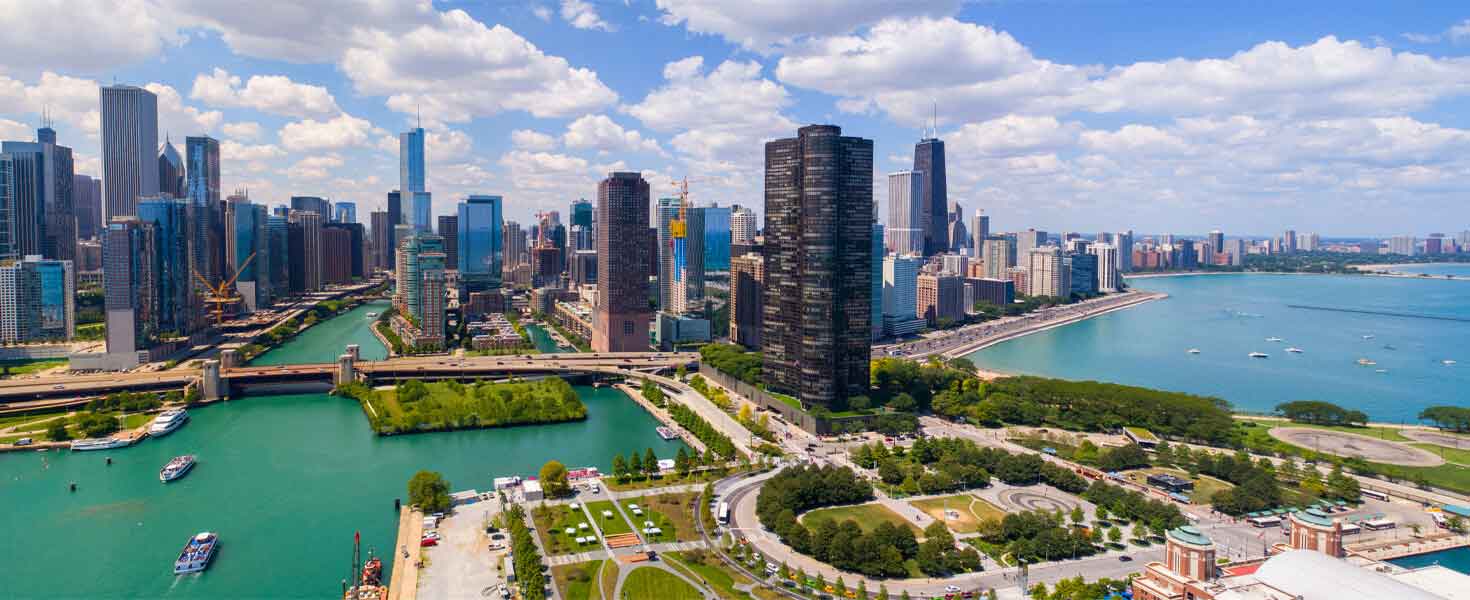As the gun smoke cleared from the last daily shootout reenactment at Dodge City’s Boot Hill Museum, I noticed an area of this western Kansas living history museum that I had yet to see.
I had already spent nearly half the afternoon exploring the museum complex, which just last year completed a $55 million renovation and this year is celebrating its 75th anniversary. I had started with the building full of new interactive exhibits that range from western Kansas’ history as bison hunting territory (stand on a rumble pad to feel, see and hear a stampede) to how Dodge City was born 150 years ago (digital portraits of town founders speak to you).
Exiting the building, you emerge in an outdoor replica Front Street: a dozen shops connected by a covered boardwalk and depicting 1876 to 1878 tenants along the town’s main street. Each building brims with artifacts, from bottles of remedies in the drugstore to haircutting and tooth-pulling equipment in John Tyler’s Tonsorial Parlor.
As I was sitting along Front Street watching the gunfight play out, I had noticed stairs to the left of the general store. Ascending the stairs, I reached the top of the hill in a low-traffic area of the complex. Here, an exhibit tells the story of the two blocks of land I’d been traversing during my visit, land that served as burial grounds in the 1870s.
You’ll also find Boot Hill Distillery on the same hill. Established in 2016 by three Kansas farmers, the distillery uses the farmers’ own grain to handcraft their spirits. The distillery and tasting room are housed in a historic building, blending seamlessly with the surroundings.

FRONTIER DAYS
Visiting Boot Hill Museum is like stepping back to a time when Dodge City, then on the country’s frontier, had more transient bison hunters, cattle drovers, soldiers, railroad workers and drifters than full-time residents. They all stopped at Fort Dodge, built in 1865 to keep the peace along the Santa Fe Trail and serve as a trading post.
When drinking at the post store became a problem and alcohol was banned at the fort, the area’s earliest entrepreneurs set up as many as 16 bars with gambling halls and brothels five miles northwest of the fort. Because the area hadn’t yet formed into a municipality with infrastructure such as law enforcement, gunslinging and lawlessness ruled. Newspaper accounts dating to when the city incorporated in 1872 called Dodge City “the wickedest little town in the West.”
While those who died in that era and were known in the community were buried at Fort Dodge, others ended up on the hill on the outskirts of the developing town. They were typically buried the same way they died, which often meant with their boots on.

“The terrain is real rocky, and the ground could be frozen, or it could be so dry it’s hard to dig deep. The first heavy rain comes in, and these shallow graves are on a bare hill, so the topsoil is going to wash away. Sometimes, you would see the tips of [the corpses’] boots sticking out from the ground,” says Boot Hill Museum Executive Director Lyne Johnson, whose great-great-grandparents traveled by covered wagon to begin ranching in southwestern Kansas. “Ours wasn’t the only Boot Hill Cemetery of that time, but we like to think we are one of the best known.”
Dodge City grew quickly in its first decade, and by 1878, the hilltop cemetery was in the middle of town. So, the bodies were moved, and homes and businesses were built where the cemetery once was. A re-created cemetery of replica headstones, complete with cement boots sticking out of the ground, is on the hilltop at Boot Hill Museum.
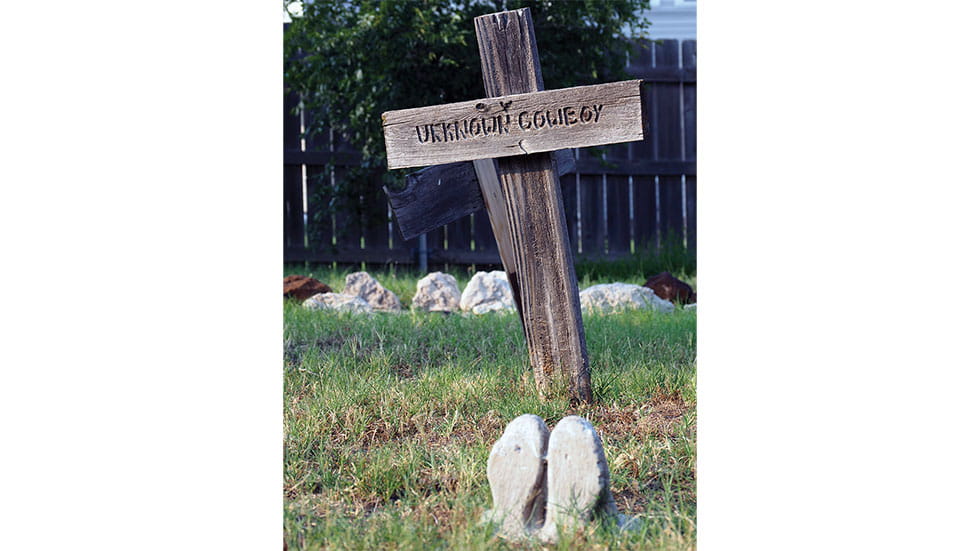
HOLLYWOOD MEETS HISTORY
Radio programs, television shows and movies have helped make Dodge City a symbol of the Wild West by creating fictional personas as well as sharing the stories of real residents such as Bat Masterson and Wyatt Earp, two of the most famous gunfighters and lawmen who worked to rein in the disorderly conduct that was rampant in town.
In 1939, Warner Brothers held the world premiere of the western Dodge City here, chartering a 14-car train to the film’s namesake city for celebrities and media to attend the event. The film—starring Errol Flynn, Olivia de Havilland and Ann Sheridan—told the story of a Texas cattle agent-turned sheriff hired to bring order to Dodge.
Inspired by the spotlight the movie had shone on Dodge City, the community began to recognize the land’s past role as an unofficial cemetery. In 1947, a civic group built Boot Hill Museum on the site to preserve both the land and the stories of the Old West.
By 1952, Gunsmoke, a radio drama set in Dodge City during the settlement of the American West, was airing nationally; it ran until 1961. Every episode began with this introduction: “Around Dodge City and in the territory out West, there’s just one way to handle the killers and the spoilers, and that’s with a US Marshal and the smell of gun smoke.”
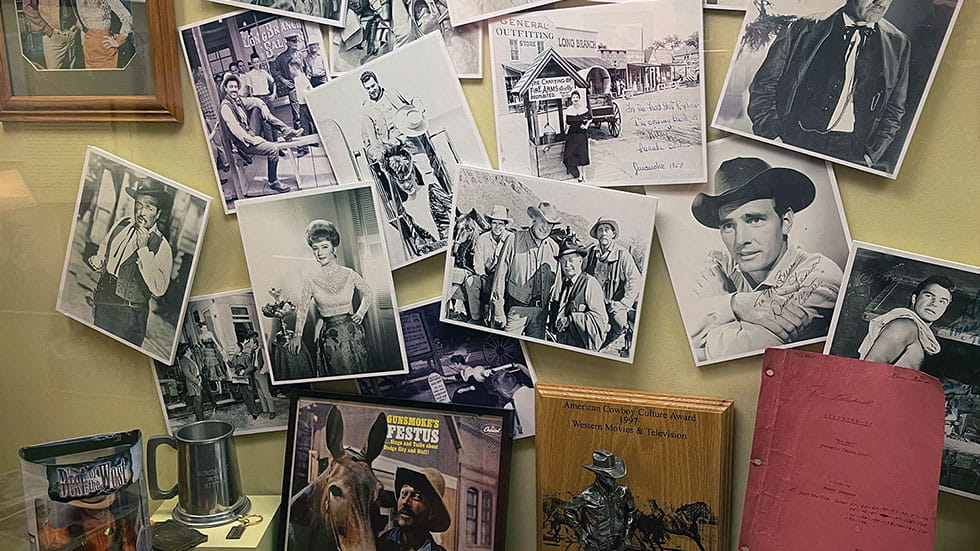
A TV version of Gunsmoke began in 1955 and ran for 20 seasons and 635 episodes. Spinoff movies and the current availability of old radio and TV shows online have kept alive the spirit of the Wild West and Dodge City.
was not filmed in Kansas, and its plotlines are based only loosely on the real Dodge City; nevertheless, the community welcomes anyone inspired to visit by the fictional series.
In 1958, at the height of the TV series’ popularity, the cast came to Dodge City to rename Walnut Street to Gunsmoke Street. On that street and scattered throughout the roughly 12-block historic district that surrounds Boot Hill Museum are statues of influential Dodge citizens as well as sidewalk medallions dedicated to stars who have portrayed famous Dodge Citians.

A self-guided walking tour will take you by these sites along with other points of interest, including the 1882 Mueller-Schmidt House, the oldest building in Dodge City still on its original site, and the Santa Fe Depot, built in 1898 and renovated in 2017 to the period of the 1920s. Download a map at visitdodgecity.org, or stop by the visitor center, which shares a parking lot with Boot Hill Museum. At the visitor center, you can buy a ticket to board a trolley for a one-hour history tour, offered Memorial Day weekend through Labor Day weekend.
While Boot Hill Museum is open year-round, the period from Memorial Day to mid-August is when you can experience the most daily activities, from twice-a-day mock gunfights and “lawmen” deputizing kids to costumed interpreters offering printing press demonstrations, giving can-can dancing lessons in the saloon, serving up sarsaparillas at the bar and performing in the evening Long Branch Variety Show. After the summer season, activities are weekends only through September.
Whenever you visit, your explorations of Dodge City will convince you that fact can be more fantastic than fiction in this legendary frontier town.








